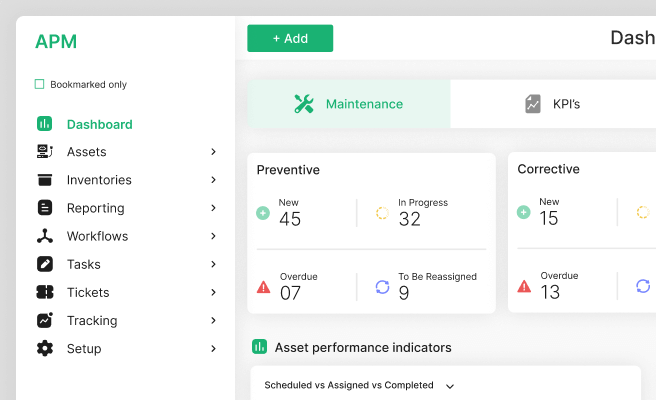Task Load Index
<p>Task Load Index (TLI) is a tool used to measure the subjective workload experienced by individuals performing a task. It is widely utilized in fields such as human factors, ergonomics, and occupational health to assess the cognitive and physical demands placed on workers. The primary keyword "Task Load Index" is crucial in understanding how workload influences performance and well-being.</p>
<p>Originally developed by NASA, the most commonly used version is known as the NASA Task Load Index (NASA-TLX). This tool evaluates workload based on six dimensions: mental demand, physical demand, temporal demand, performance, effort, and frustration. Each dimension is rated by the individual, providing a comprehensive view of the task's demands.</p>
<h2 id="2">Components of Task Load Index</h2>
<p>The Task Load Index is divided into six key components, each addressing a different aspect of workload:</p>
<ul>
<li><b>Mental Demand:</b> The mental and cognitive requirements of the task.</li>
<li><b>Physical Demand:</b> The physical effort required to perform the task.</li>
<li><b>Temporal Demand:</b> The time pressure associated with completing the task.</li>
<li><b>Performance:</b> The level of success in achieving the task goals.</li>
<li><b>Effort:</b> The amount of mental and physical work exerted.</li>
<li><b>Frustration:</b> The amount of stress and annoyance experienced during the task.</li>
</ul>
<h3 id="3">Importance of Task Load Index in Workplaces</h3>
<p>Understanding and measuring workload is critical for several reasons:</p>
<ul>
<li><b>Enhancing Productivity:</b> By identifying high workload areas, organizations can implement strategies to reduce stress and increase efficiency.</li>
<li><b>Improving Employee Well-being:</b> Monitoring workload helps in preventing burnout and ensuring a healthy work environment.</li>
<li><b>Informed Decision-Making:</b> Data from TLI assessments can guide resource allocation and workflow adjustments.</li>
</ul>
<h3 id="4">Real-world Applications and Examples</h3>
<p>The Task Load Index is extensively used in various industries. For instance:</p>
<ul>
<li><a href="https://human-factors.arc.nasa.gov/groups/TLX/" style="color: #2896FF; text-decoration: underline;">NASA</a> utilizes TLI to assess astronauts' workload during missions, ensuring their tasks are manageable to maintain performance and safety.</li>
<li>In healthcare, TLI helps in evaluating the workload of medical professionals, aiding in the design of better work schedules and reducing the risk of errors.</li>
<li>Within the climate tech sector, companies use TLI to optimize the workload of engineers developing sustainable technologies, balancing high innovation demands with well-being.</li>
</ul>
<h2 id="5">Implementing Task Load Index</h2>
<p>Implementing TLI involves several steps:</p>
<ol>
<li><b>Selection:</b> Choose the appropriate TLI tool for your industry. The NASA-TLX is a popular choice due to its comprehensive approach.</li>
<li><b>Training:</b> Ensure that employees understand how to use the TLI tool and accurately rate their workload.</li>
<li><b>Data Collection:</b> Regularly collect workload data through surveys or digital tools.</li>
<li><b>Analysis:</b> Analyze the data to identify trends and high workload areas.</li>
<li><b>Action:</b> Implement changes based on the findings to improve workload distribution and employee well-being.</li>
</ol>
<h3 id="6">Challenges in Using Task Load Index</h3>
<p>Despite its benefits, there are challenges in using TLI:</p>
<ul>
<li><b>Subjectivity:</b> The self-reported nature of TLI can introduce bias. Combining TLI with objective measures can improve accuracy.</li>
<li><b>Consistency:</b> Ensuring consistent responses over time requires clear guidelines and regular re-training.</li>
<li><b>Time-Consuming:</b> Regular assessments can be time-consuming, but digital tools can streamline the process.</li>
</ul>
<h3 id="7">Overcoming Challenges</h3>
<p>Strategies to overcome these challenges include:</p>
<ul>
<li><b>Combining Methods:</b> Use TLI alongside other workload measures to obtain a well-rounded view.</li>
<li><b>Clear Guidelines:</b> Provide detailed instructions and examples to ensure consistent reporting.</li>
<li><b>Leveraging Technology:</b> Implement software tools to simplify data collection and analysis, such as <a href="https://www.qualtrics.com/" style="color: #2896FF; text-decoration: underline;">Qualtrics</a> or <a href="https://www.surveymonkey.com/" style="color: #2896FF; text-decoration: underline;">SurveyMonkey</a>.</li>
</ul>
<h2 id="8">Conclusion</h2>
<p>The Task Load Index is a valuable tool in assessing and managing workload in various industries. By understanding the demands placed on employees, organizations can enhance productivity, improve well-being, and make informed decisions. For more information on improving workload assessment strategies, consider exploring additional resources or consulting with experts in the field.</p><p>Increase user engagement that converts your demos into sales. Optimise your UX strategies with our audits.
<p>Fill out the <a href="https://tally.so/r/n97pxQ" style="color:#2896FF; text-decoration:underline;">UX Audit form</a> to get started. Ready to discuss your needs? <a href="https://cal.com/akhilak/what-if-design?duration=25" style="color:#2896FF; text-decoration:underline;">Book a consultation call</a> with us today.</p></p>

Let's scale your impact with great design.
Free consultation, no sales pitch
Thank you! Your submission has been received!
Oops! Something went wrong while submitting the form.
Let’s talk
Nothing great is built alone.
Let’s connect about your vision, our work and how we can collaborate.
Get in touch

